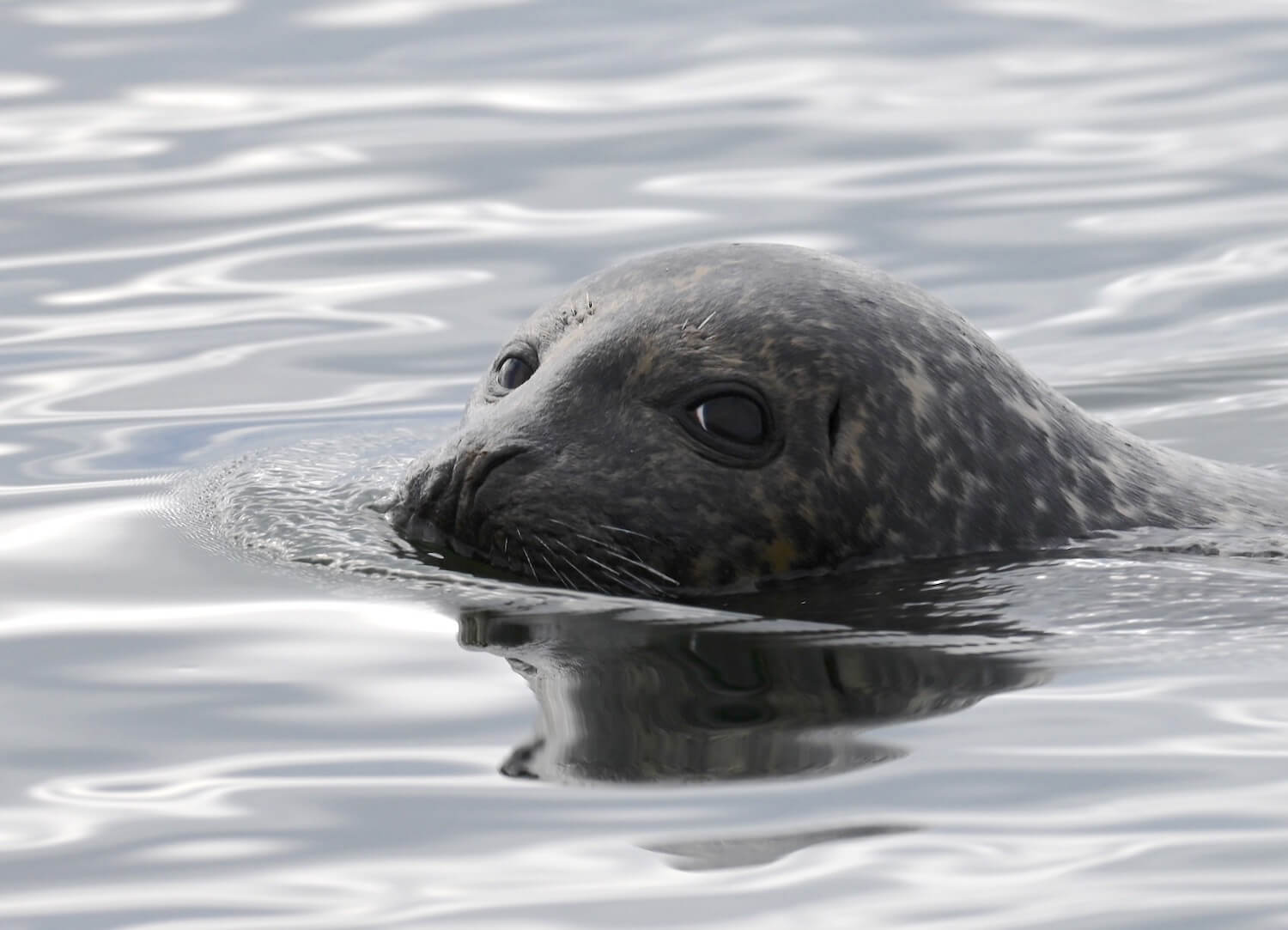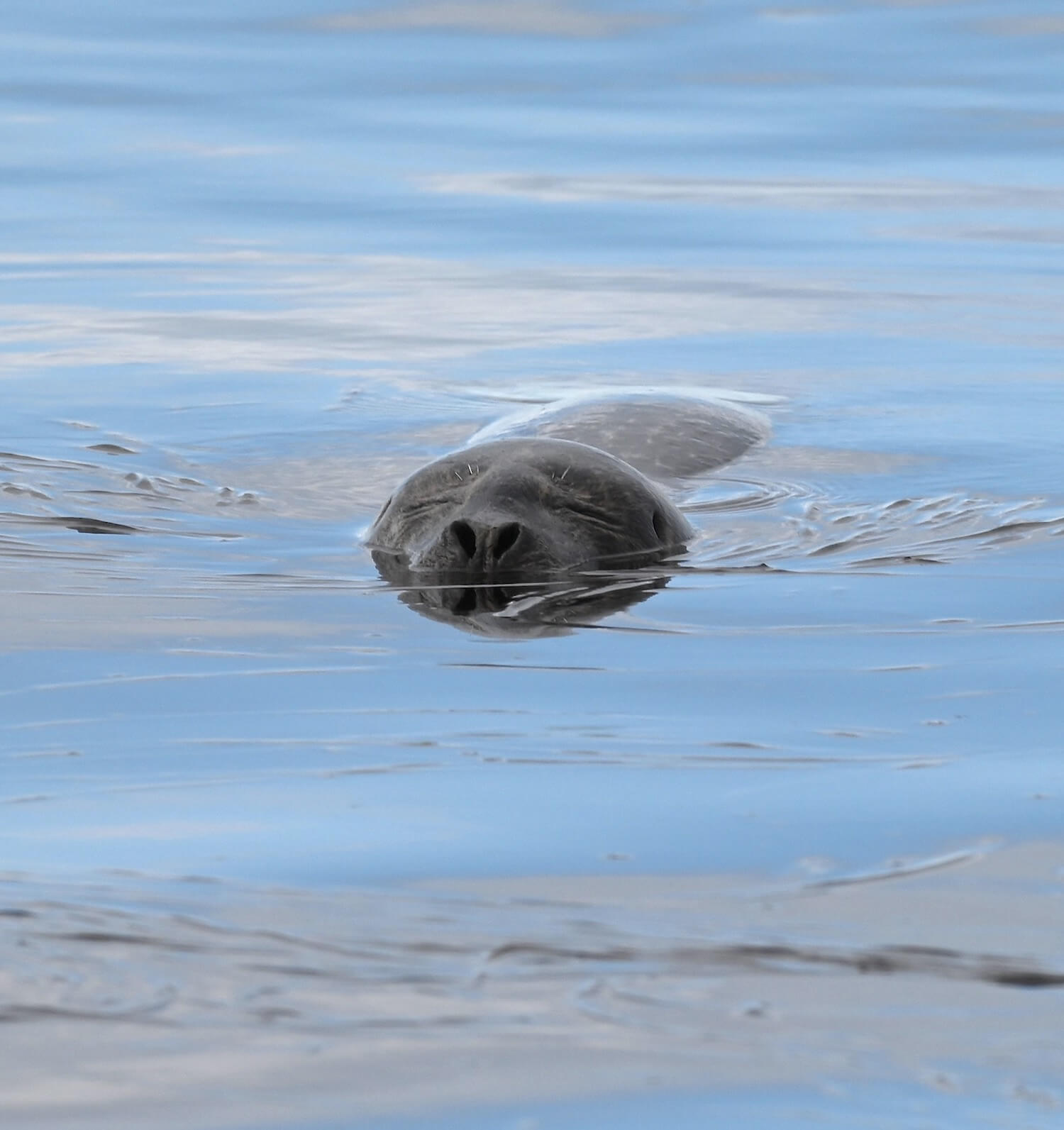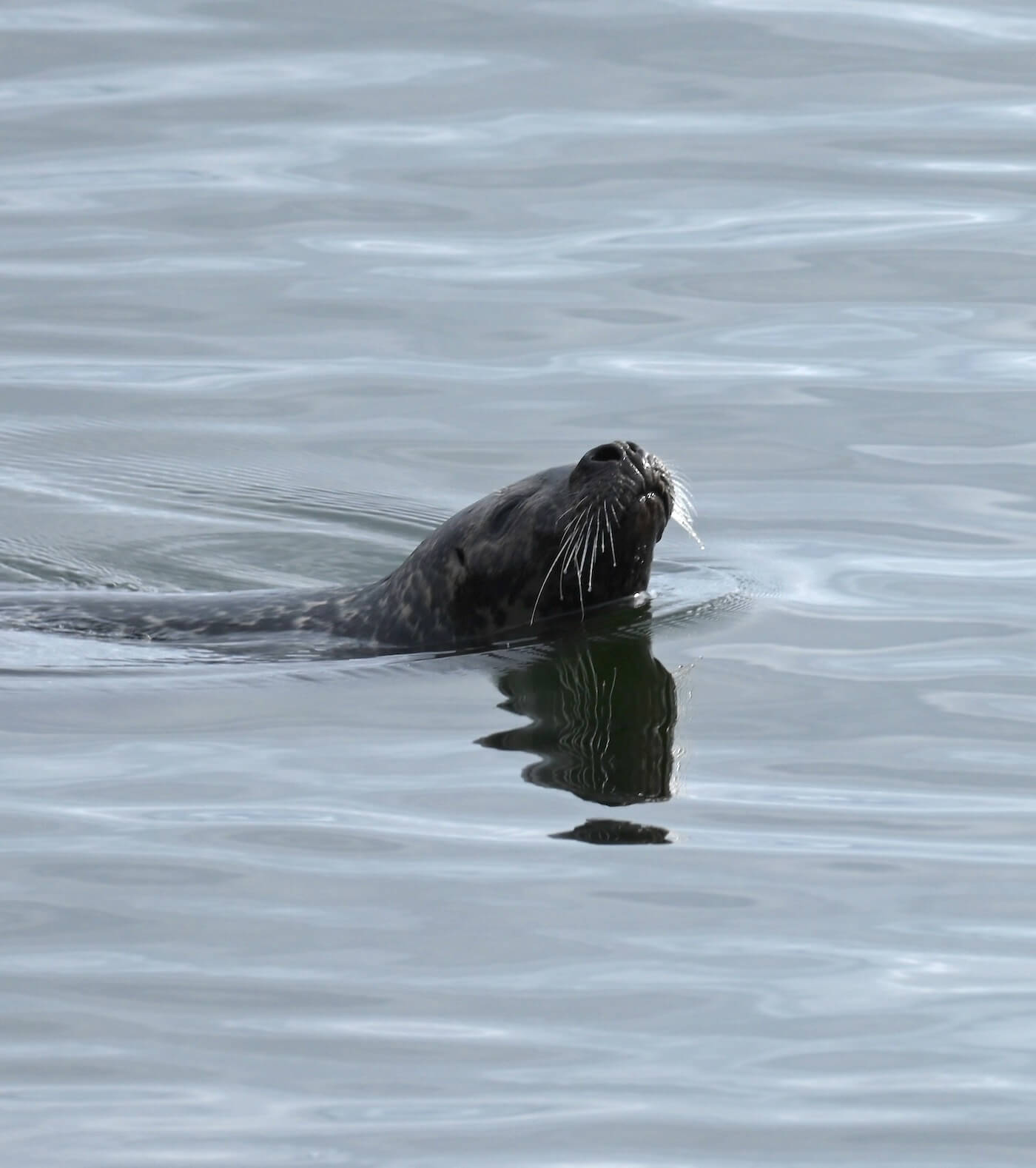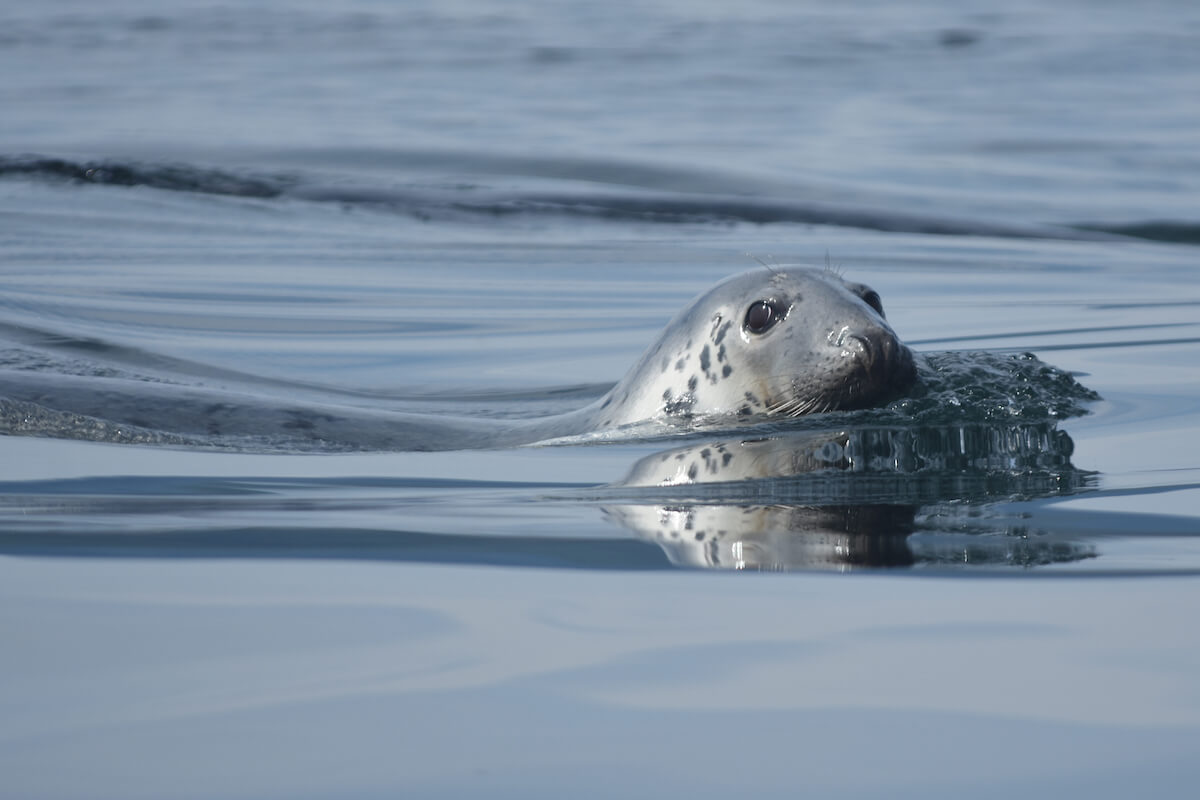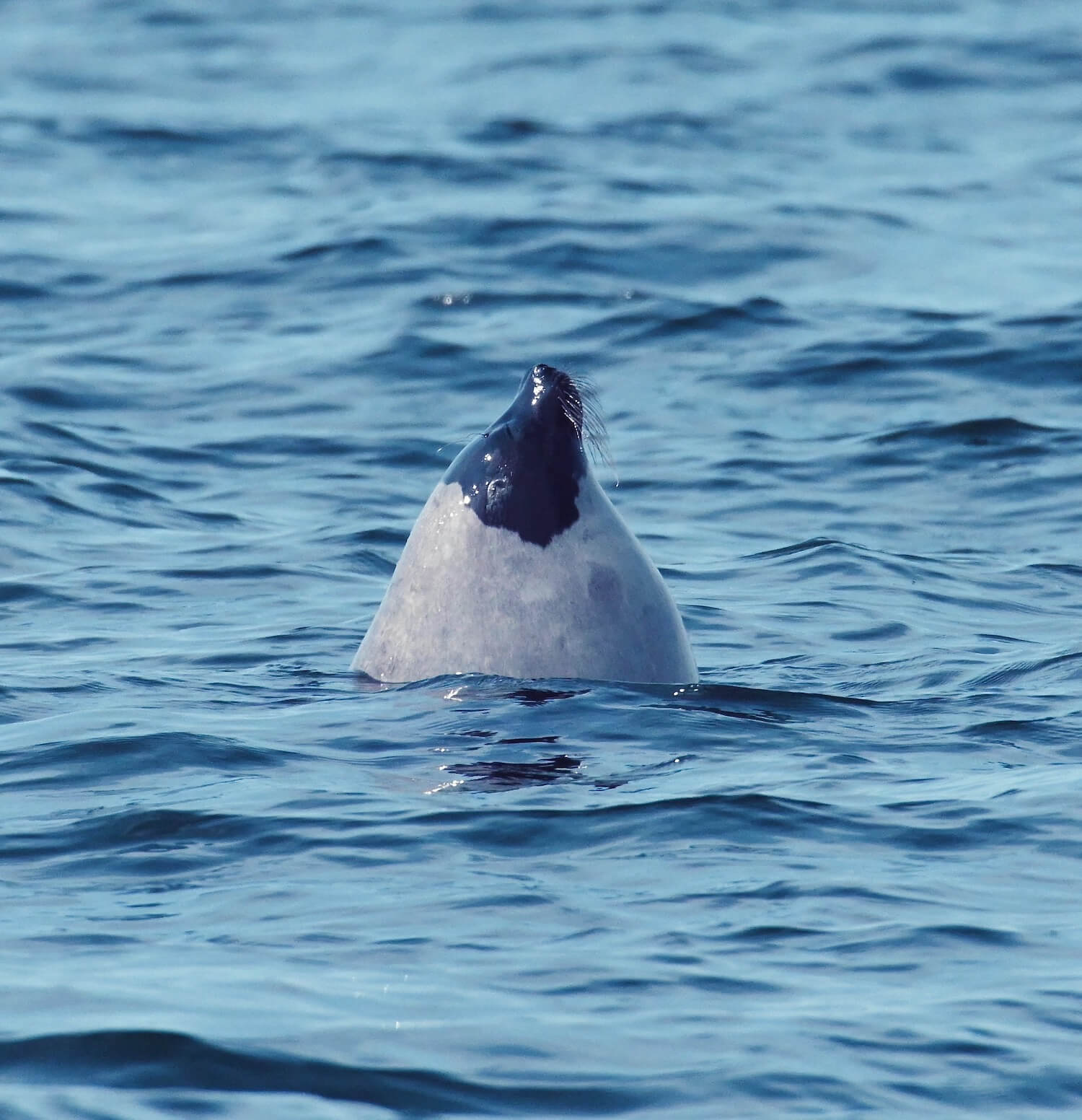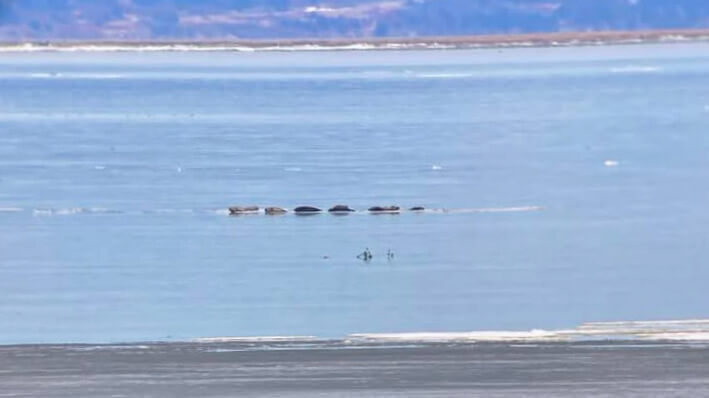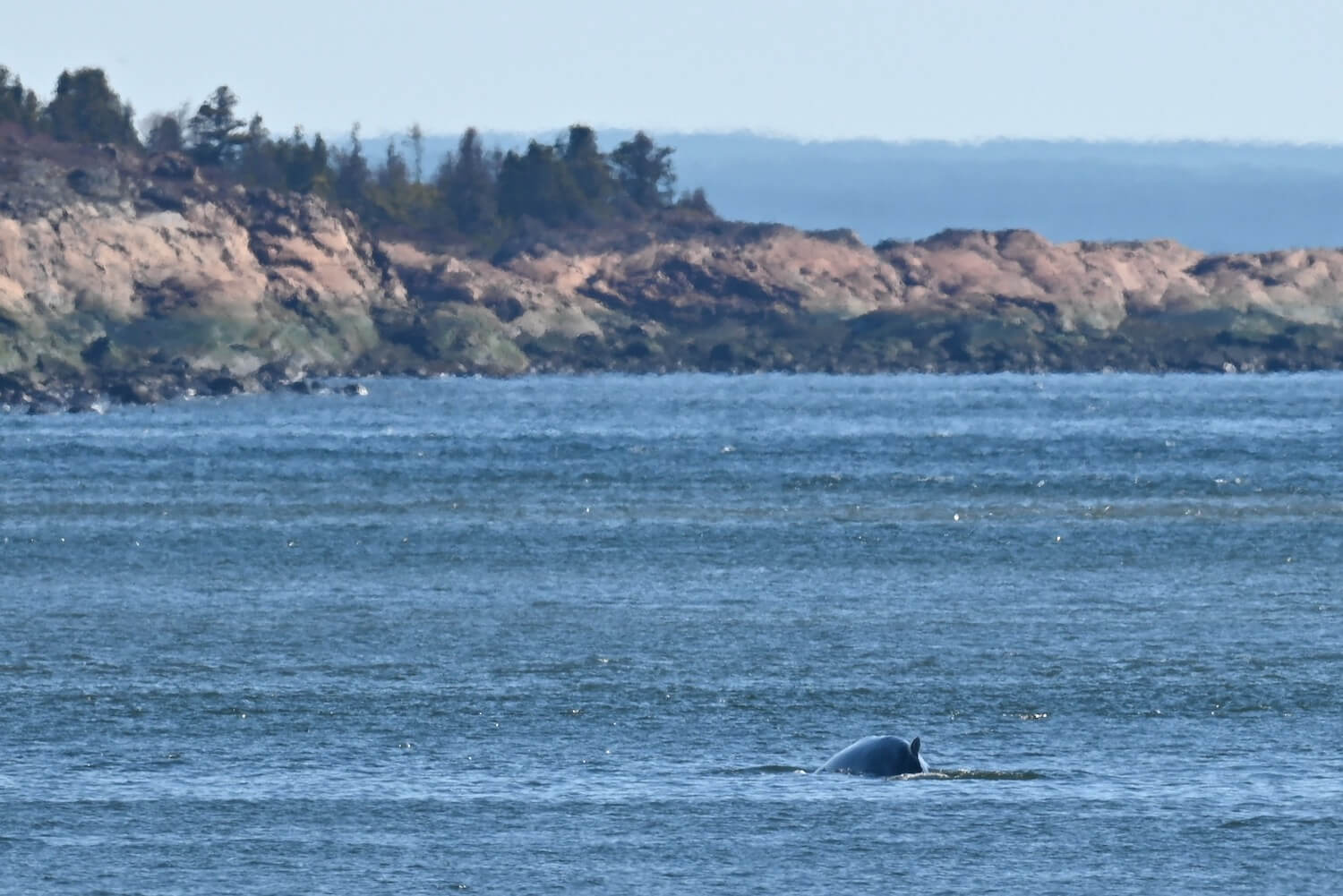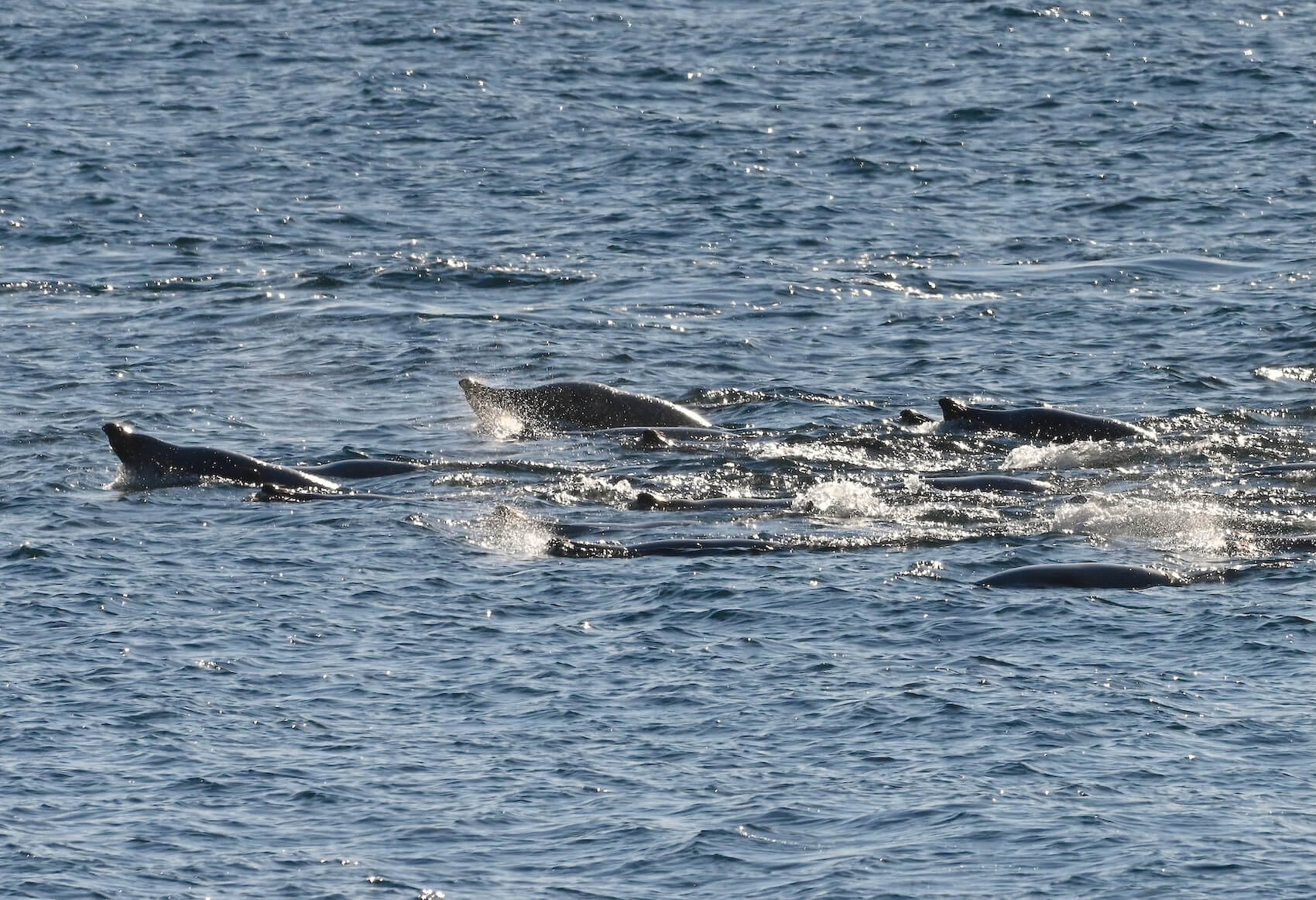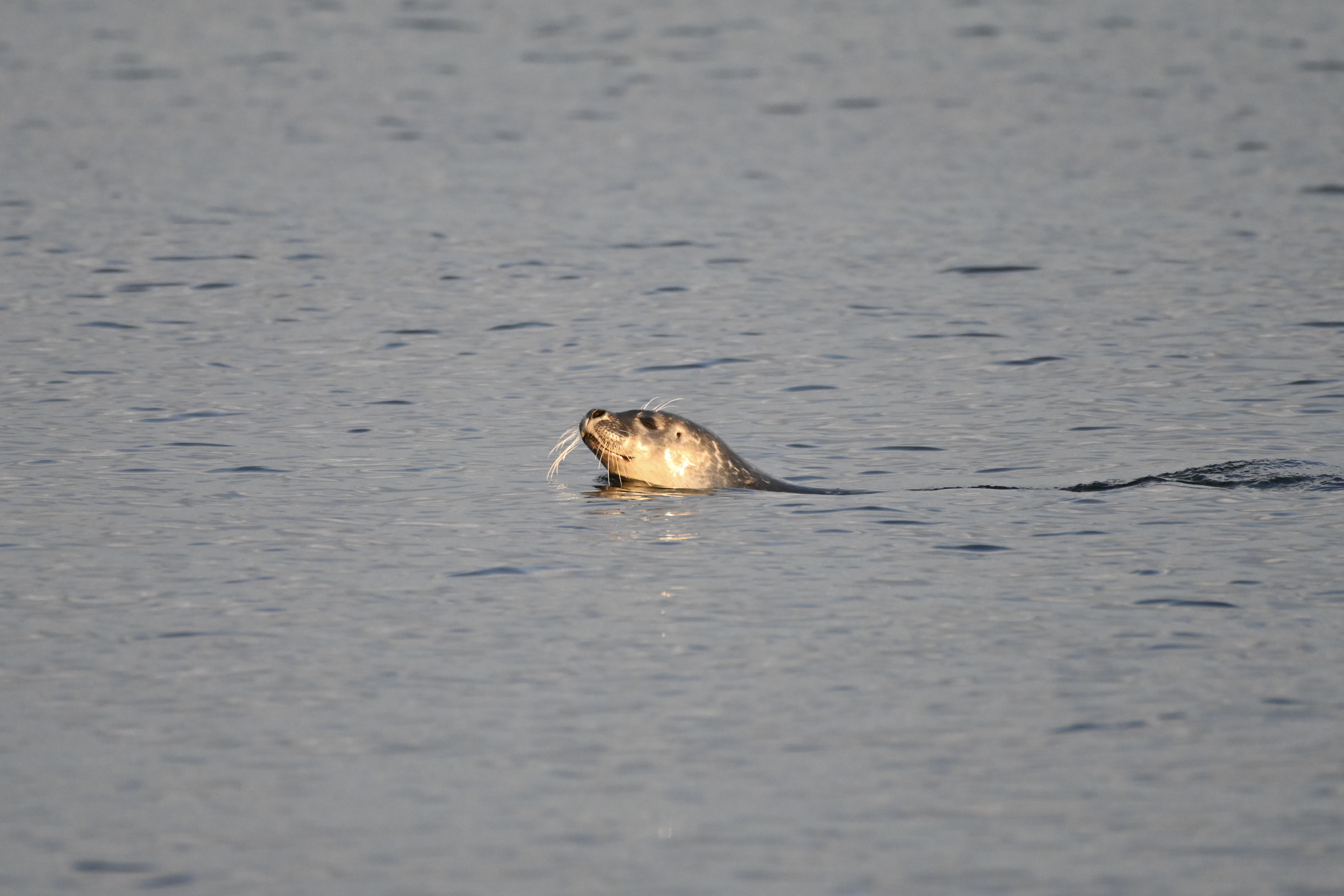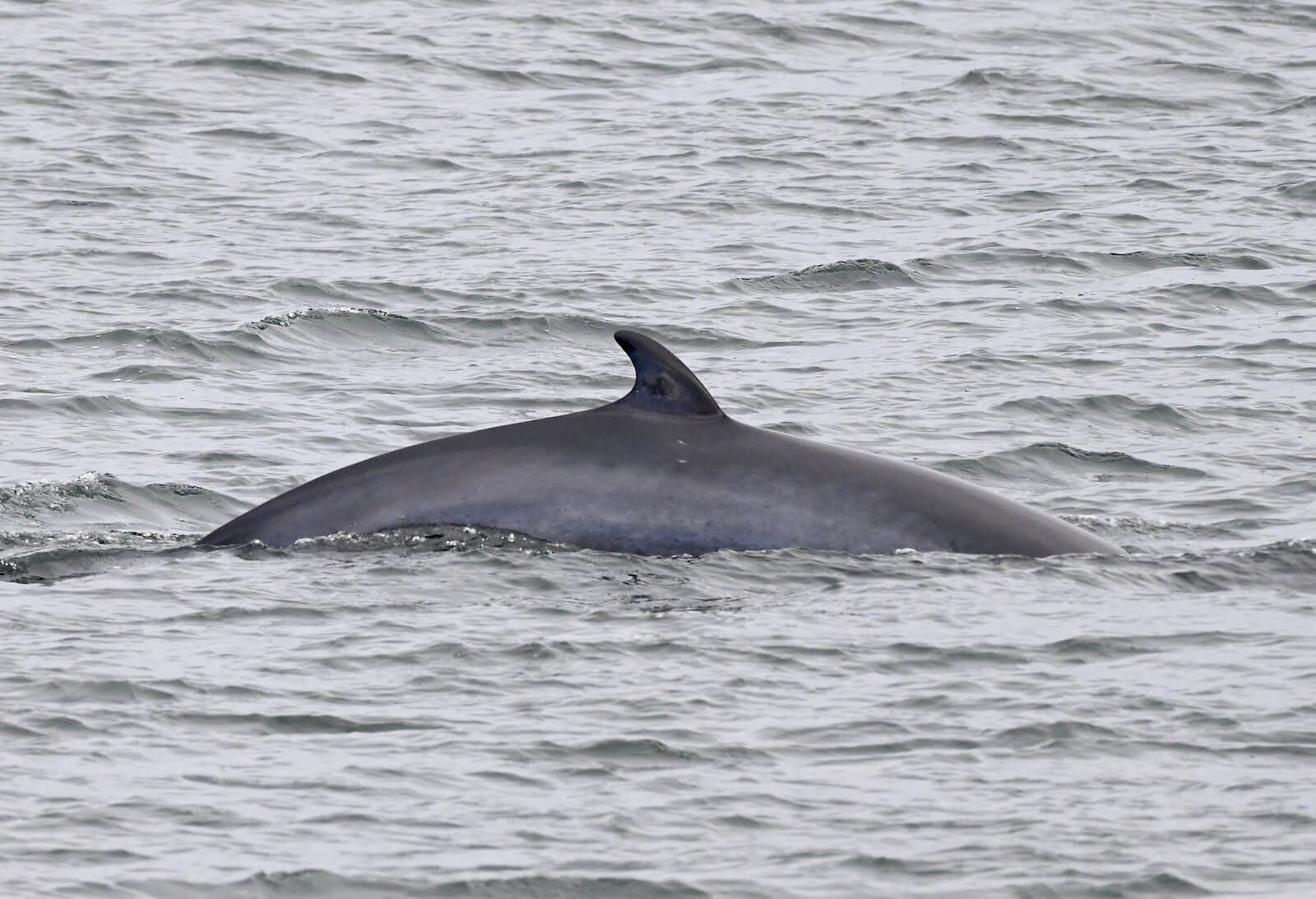After numerous recent sightings of large rorquals, the time has come to turn the spotlight onto the seals! Harbour seals in several locations, a handful of grey seal sightings, and a group of harp seals resting on the ice in Gaspé Bay before the rain chased them away. Cetaceans are far from having left the estuary, however, with sightings of belugas, minke whales, and fin whales!
Three species, three different behaviours!
The Cap-à-l’Aigle harbour in La Malbaie welcomed a harbour seal on April 30, which enjoyed free rein over the still-empty marina. Apparently, it appeared to be “bouncing” across the water, curiously poking out its head to check out what was happening on land.
Farther downstream, in the Tadoussac, Les Bergeronnes, and Les Escoumins sectors, sightings of this species have been almost daily. A naturalist shares a morning encounter with a peaceful harbour seal dozing on the surface of a calm sea. This species can dive to depths of up to 480 metres and stay under water for upwards of 30 minutes. To do so, it lowers its heart rate and stocks up on oxygen in its blood and muscles. It feeds mainly on herring, sand lance, capelin, and even flounder, but it is also an opportunist that varies its diet depending on prey availability.
At Cap de Bon-Désir, one enthusiast was lucky enough to see a trio of seals of different species: “A harp seal, a grey seal, and a harbour seal, all separately.” While these species do sometimes share the same habitat, each one has its own particularities. Recognizable by its small, rounded head and V-shaped nostrils, the harbour seal prefers shallow coasts and estuaries, where it can haul itself up onto the rocks to rest. The grey seal, which is larger than the harbour seal, is distinguished by its long, horse-like head and well-separated nostrils. It prefers coastal areas but may also frequent deeper waters, where it feeds mainly on fish. The harp seal, easily identifiable by its light-coloured coat and its large, black, horseshoe-shaped band in adults, migrates long distances between the Arctic and the Gulf of St. Lawrence. It uses the ice to breed, give birth, and moult, and is observed in the estuary from fall to spring.
Sightings on the south shore have also been numerous. A resident reported an impressive concentration of individuals at Anse-aux-Cousins, in Gaspé Bay, where nearly a hundred seals were resting on the last ice. They left after the rain melted their resting platform.
Out in Baie des Mille-Vaches, a sailor noticed a few pinnipeds around Île du Bic. Despite the lingering cold weather, the seals appeared to be quite active. This region is an ideal habitat for the species thanks to its numerous rocky islets where the animals can rest.
Belugas in Saint-Irénée and hybrid
“We saw them! We saw them! We saw them!” exclaimed a resident of Saint-Irénée. “The belugas were in the same spot for over two hours, showing their backs. There were three or four of them.” On Thursday, May 1, on a walk down to the beach, she observed six large belugas swimming near shore. At Cap de Bon-Désir in Les Bergeronnes, belugas with calves were spotted. Near Franquelin, the presence of three minke whales was reported, while fin whales and the famous hybrid rorqual were spotted in the estuary!
Thanks to all our collaborators!
Special thanks go out to all our observers who share their love for marine mammals with us! Your encounters with cetaceans and pinnipeds are always a pleasure to read and discover.
On the water or from shore, it is your eyes that give life to this column.
Odélie Brouillette
Marie-Andrée Charlebois
Laetitia Desbordes
Pierre-Soleil Dion
Diane Ostiguy
Renaud Pintiaux
Pascal Pitre
René Roy
Christine Stadelmann
Andréanne Sylvain
Marielle Vanasse
And to all the others!
Additionally, we would like to acknowledge the following teams that also share their sightings:
Sept-Îles Research and Education Centre (CERSI)
Group for Research and Education on Marine Mammals (GREMM)
Marine Mammal Observation Network (MMON)
Quebec Marine Mammal Emergency Response Network (QMMERN)
Mingan Island Cetacean Study (MICS)
Would you also like to share your observations?
Have you seen any marine mammals in the St. Lawrence? Whether it’s a spout offshore or just a couple of seals, drop us a line and send your photos to [email protected]!


